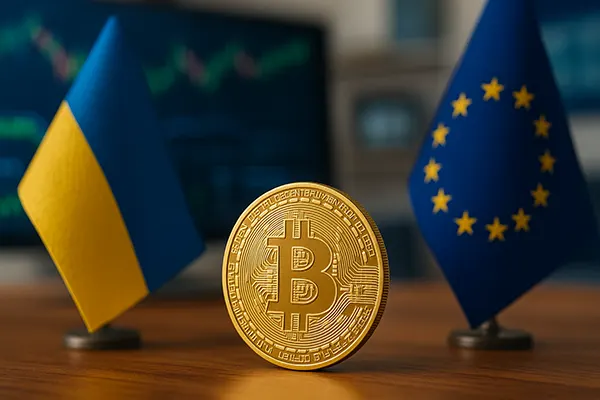
Crypto-Taxonomy: Understanding and Classifying Ukrainian and European Cryptocurrency Regulation
Cryptocurrency has moved from being a niche financial innovation to a mainstream subject of economic policy, investment, and legislation. Ukraine and the European Union (EU) have both developed regulatory approaches that aim to balance innovation with risk management. To navigate this landscape effectively, it is essential to understand the taxonomy of crypto-assets and the legal frameworks shaping their use in 2025.
Regulatory Taxonomy in Ukraine
Ukraine has been proactive in shaping its cryptocurrency regulation, particularly after adopting the Law “On Virtual Assets” in 2021, with implementation advancing through 2023–2025. The legislation defines virtual assets as intangible goods with specific property rights, categorising them into secured and unsecured tokens. In practice, this classification helps align Ukrainian regulations with European standards while giving clarity to businesses and investors.
The National Bank of Ukraine and the National Securities and Stock Market Commission act as primary regulators. The framework emphasises transparency, requiring crypto exchanges and custodians to register, adhere to anti-money laundering (AML) policies, and cooperate with financial monitoring authorities. This reflects a broader effort to integrate crypto into Ukraine’s post-war financial recovery strategy.
Furthermore, Ukraine has been coordinating with the European Union to harmonise its regulations, especially as part of its EU accession process. By aligning with the Markets in Crypto-Assets (MiCA) regulation, Ukraine is creating a legal environment that encourages international partnerships and investor trust.
Practical Implications for Ukrainian Market Participants
For crypto businesses, Ukraine’s taxonomy brings clearer licensing requirements. Service providers now need to comply with consumer protection rules, ensuring investors are informed of risks. This increases operational costs but also enhances credibility. For individuals, tax obligations have been clarified, with crypto considered as property subject to income tax, thus reducing the previous ambiguity.
From a business perspective, this structure opens doors to collaboration with European firms. Cross-border operations become easier when classifications and compliance standards align with EU frameworks. Ukrainian startups, in particular, benefit from access to clearer legal grounds when seeking international funding.
However, challenges remain in enforcement. The pace of regulatory adoption has sometimes been slowed by broader geopolitical and economic circumstances, which may impact the effectiveness of supervision and market stability.
The European Union and the MiCA Framework
In the EU, the cornerstone of cryptocurrency regulation is the MiCA regulation, formally adopted in 2023 and set to take full effect between 2024 and 2025. MiCA provides a unified legal structure across all member states, eliminating the fragmented national rules that previously existed. This regulation classifies crypto-assets into utility tokens, asset-referenced tokens, and e-money tokens, each with specific regulatory requirements.
One of MiCA’s key strengths lies in consumer protection. Issuers must publish whitepapers with detailed information, while service providers face strict licensing conditions. The European Securities and Markets Authority (ESMA) and the European Banking Authority (EBA) have been granted supervisory powers to ensure consistent application.
Additionally, MiCA places a strong emphasis on AML and counter-terrorist financing (CTF) measures. These obligations align with broader EU financial regulations, aiming to create a secure and transparent digital asset ecosystem while supporting innovation in blockchain-based services.
Impact of MiCA on EU Crypto Ecosystem
For businesses, MiCA removes regulatory uncertainty. A firm licensed in one EU member state can operate across the entire bloc under a “passporting” system. This reduces administrative barriers and encourages the development of pan-European crypto enterprises. Startups, investors, and established financial institutions alike benefit from the harmonised market.
For investors, MiCA ensures stronger protection. Transparent disclosure requirements reduce the risk of fraud, while supervisory bodies ensure compliance. This framework makes the EU a more attractive region for institutional investment into digital assets.
Despite its strengths, MiCA also introduces challenges. Smaller firms may face difficulties meeting compliance costs, potentially leading to market consolidation. Critics also argue that excessive regulation could stifle innovation, especially in decentralised finance (DeFi) projects that do not neatly fit into traditional classifications.

Comparative Insights Between Ukraine and the EU
Both Ukraine and the EU have adopted taxonomies that aim to provide legal certainty, enhance investor protection, and align with international AML standards. However, their approaches differ in maturity and scope. While the EU’s MiCA provides a fully harmonised system, Ukraine’s framework is still in the process of full implementation and adjustment to European norms.
Ukraine’s regulatory focus is also more strategic, tied to its EU integration ambitions. Its flexible adoption allows the country to gradually align with MiCA, providing a testing ground for balancing innovation and regulation. In contrast, the EU’s regulation is already binding, with little room for national adaptation beyond enforcement mechanisms.
For global investors, this means Ukraine remains a promising but developing market, while the EU represents a mature and standardised environment. The differences in timing and enforcement capacity could influence investment flows and the pace of local market development.
Future Outlook for Regulatory Convergence
By 2025, Ukraine is expected to fully align its regulatory system with MiCA, effectively creating a shared crypto-legal environment across the EU and its neighbouring candidate state. This alignment will not only facilitate cross-border business but also strengthen investor confidence.
The EU, meanwhile, will continue refining its framework, addressing gaps related to decentralised finance, non-fungible tokens (NFTs), and new forms of tokenisation. Ukraine will likely follow these developments closely, ensuring its laws remain compatible with evolving European standards.
Ultimately, both Ukraine and the EU are moving toward a model where innovation is encouraged within a clearly defined legal environment. This reduces systemic risks, protects investors, and creates a foundation for sustainable growth in the digital asset sector.


